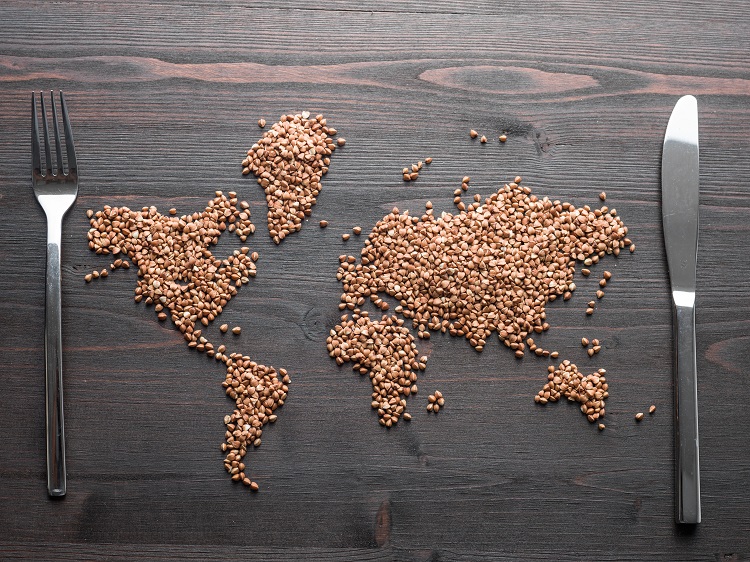
Access to food is one of the most basic necessities of life. According to Hungry for Action, hunger affects 735 million people around the world. Concerns about it are, according to the survey, widespread throughout the globe.
The survey asked respondents in 13 countries (Brazil, Canada, France, Germany, India, Indonesia, Italy, Japan, Kenya, Nigeria, South Africa, the UK, and the US) to rank eight pressing global issues in order of how concerned they were about them. 20% of respondents said that the ‘supply and price of food’ was their top concern, and 84% of respondents ranked it on some level of concern.
Concerns about food beat out government corruption (which was the primary concern for 17% of respondents), unemployment (16%), rising cost of energy (12%), conflict (11%), heatwaves (10%), wealth inequality (8%) and rising authoritarianism (6%).
The price of food
Rising food prices have been a major cause for world hunger in recent years, as major geopolitical events such as the war in Ukraine disrupt the global food supply chain.
However, according to Alice Macdonald, Hungry for Action’s campaign director, the high levels of hunger around the world are not down to a single factor, such as inflation, but “a perfect storm of high food, fertilizer and fuel prices, as a result of compounding crises due to the COVID-19 pandemic, the impact of climate change, cost-of-living crisis, and the Ukraine invasion, has led to a global food crisis, exacerbating the already devastating trend of rising hunger since 2014.”
Nevertheless, Macdonald does cite several surveys which have shown that rising food prices and inflation are deeply exacerbating the problem. A survey by WorldVision of 14,000 people in 16 countries found 37% of parents saying their children don’t get proper nutrition, and 21% have gone to bed hungry in the last month. A survey of 13 countries by ActionAid found that 74% of respondents are shifting to low-quality food and 48% of mothers reducing food quantities they give to their children, both as a result of rising food prices. In the second survey, food insecurity was also shown to have knock-on effects in other areas.
“Survey results also found the adoption of negative coping strategies that risk pushing families and communities into poverty and food and nutrition insecurity, such as taking on debt, the selling of assets (such as livestock), reduced use of expensive fertilisers that results in smaller yields and decline in farmers’ incomes.”
Food prices will continue to rise. According to the World Bank’s Food Security update last month, 57.1% of low-income countries, 83% of lower-middle-income countries and 59% of upper-middle-income countries have inflation rates above 5%.
In Africa, according to AGRA’s September 2023 Food Security Monitor, there is more of a mix. In East Africa, with the exception of Ethiopia, food prices are falling after a new harvest. In southern Africa, countries such as Malawi and Zambia are experiencing higher prices as the lean season begins.
Global problems
In Hungry for Action’s survey, respondents in both the global north (richer, ‘developed’ countries) and the global south (poorer, ‘developing’ countries) presented food access and supply as a concern, those in the global south viewed it so more overwhelmingly.
For example, 72% of respondents in Kenya and 71% in Nigeria were ‘very concerned’ about food’s affordability and accessibility, compared to 41% in the United States.
Despite these differences, for Macdonald, they are all alike in that they all face hunger, and the causes are essentially alike. “Every country will need a specific approach depending on the context in that country but there are measures that will apply across countries including the need to tackle the underlying causes of hunger – poverty and inequality, and the provision of adequate social protection systems to provide a safety net for people, investing in climate adaptation and mitigation,” she told us.
Navigating the future
According to Macdonald, the segmented view of different crises prevents governments from seeing the bigger picture in order to take action. “Political will is a key factor in addressing the food crisis,” she told us. “Whilst there is action on specific elements of it, what is missing is a joined up approach that addresses all elements together.
“Governments currently view the many elements of the global food crisis (namely unchecked climate change, food insecurity, malnutrition, fragile food systems and crippling debt) as separate issues – resulting in a piecemeal and fragmented response that not only ignores the interplay between these global challenges but misses opportunities for joint systems-level action that could drive progress in multiple areas.”
The campaign, Macdonald told us, is calling for governments to double funding for climate adaptation, invest in small-scale food producers, invest and bring to scale cost-effective nutrition interventions that we know work, and cancel poor countries’ debts. It sees the way to bring about these solutions as rooted in international collaboration. Events such as COP28, the Italian-led G7 and Brazilian-led G20, the World Bank and IMF Spring and Annual meetings are just a few that provide platforms for world leaders to discuss the issue.
